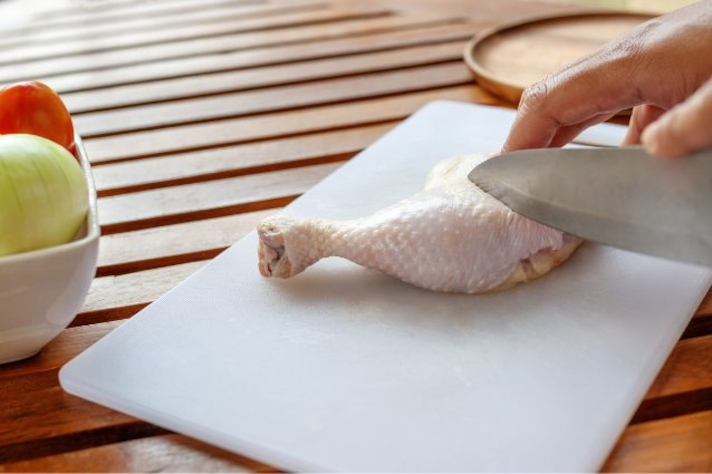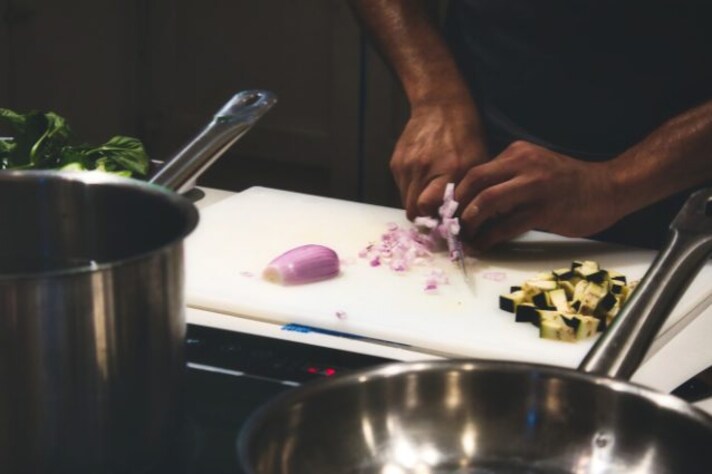Are Plastic Cutting Boards Safe For You to Use? Here’s What Experts Have to Say
A 2022 study confirmed that regular use of plastic boards sheds tiny particles of microplastics into our food, which may pose health risks. While plastic boards are convenient, alternatives like wood or bamboo, which don’t release microplastics, might be safer.

The world of kitchen tools might seem straightforward—grab a cutting board, chop your veggies, and go. But with recent studies spotlighting the potential risks of plastic cutting boards, particularly concerning microplastics, the simple task of food prep has become more complicated. Are plastic cutting boards truly safe to use, or is it time to reconsider what we’re slicing our food on? Let’s dive into the science and expert opinions to find out.
Are Plastic Cutting Boards Safe to Use?
Plastic cutting boards have long been a kitchen staple. They’re affordable, easy to clean, and lightweight, making them an attractive option for both home cooks and professional chefs. However, concerns about their safety have been raised, particularly regarding their potential to harbor bacteria and release microplastics into food.
From a bacterial standpoint, plastic cutting boards can be safe if maintained properly. Unlike wood, which has natural antimicrobial properties, plastic boards require more diligent cleaning to prevent bacteria from settling into knife grooves. Experts, like those at the University of California, recommend frequent washing and replacing heavily scored boards to minimize bacterial risks.

But the real debate around plastic cutting boards doesn’t stop at hygiene—it extends to the increasingly discussed issue of microplastics. This brings us to the next question: do plastic cutting boards release microplastics, and if so, should we be concerned?
Do Plastic Cutting Boards Release Microplastics?
The simple answer is yes—plastic cutting boards can release microplastics. A 2022 study conducted by a research team at the University of California found that plastic cutting boards, when used regularly, can shed microplastic particles into food. These tiny particles, often invisible to the naked eye, are the result of repeated cutting, which wears down the surface of the board. Over time, these particles mix with the food we prepare, raising concerns about their impact on human health.
While research on the health effects of microplastics is still in its early stages, what we know so far is unsettling. Microplastics have been detected in various food sources, including seafood, honey, and even salt. Some studies suggest that prolonged exposure to microplastics could lead to inflammation or other health issues, although definitive conclusions are still being drawn. The potential risks, coupled with their widespread presence, make the conversation around microplastics and plastic cutting boards particularly urgent.

Should You Steer Clear of Plastic Cutting Boards?
Given the current knowledge, it’s reasonable to consider alternatives to plastic cutting boards, especially if you’re concerned about microplastics. Wooden and bamboo cutting boards, for instance, are less likely to shed particles and have natural antimicrobial properties. They do require more careful maintenance—regular oiling and thorough drying—but they offer a safer option for those looking to reduce their microplastic exposure.
For those who prefer to stick with plastic, it’s important to replace boards regularly, especially when they show signs of deep cuts or wear. Choosing high-quality plastic boards that are BPA-free and approved for food use can also mitigate some risks.
;Resize,width=767;)
;Resize,width=712;)
;Resize,width=712;)
;Resize,width=712;)
